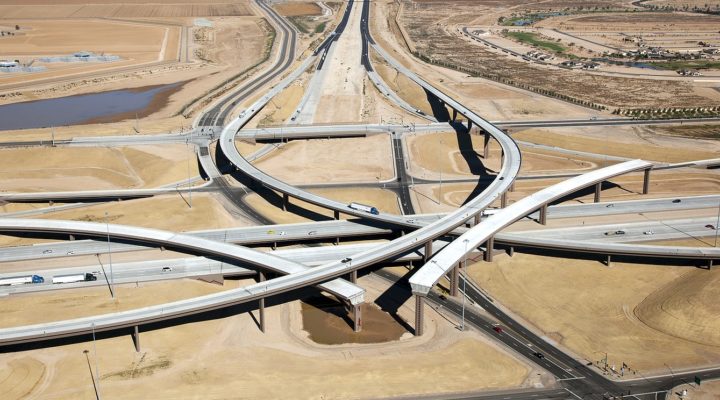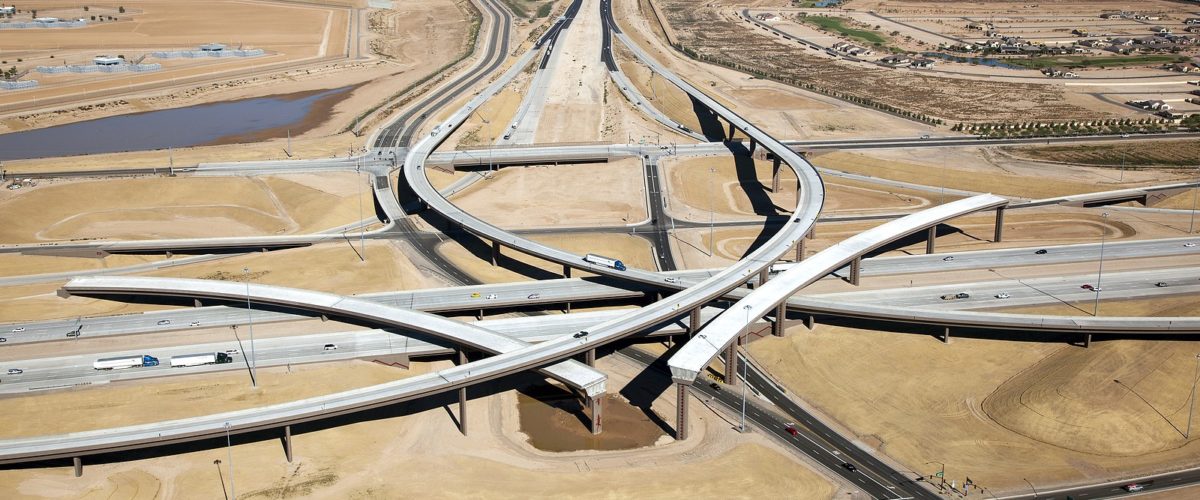While electoral maps in the United States are often colored red and blue, aerial imagery of the country suggests that the real colors of our political spectrum are gray and green.
From the gray, concrete landscapes of urban America to the green, vegetal landscapes of rural America, this alternative color scheme provides another perspective for understanding religious congregations that strive for some variant of nonpartisan or “purple” — a mixture of both Republican red and Democratic blue.
Political polarization in the country has been on the rise for more than a decade, and the 2020 election is merely stretching our partisan divisions further. Pew Research has recently shown a widening partisan divide over the freedom to peacefully protest. While we might often think these divisions are the result of different ideologies, there is room to argue that the fracturing of the American electorate is the result of differing locations.
“While we might often think these divisions are the result of different ideologies, there is room to argue that the fracturing of the American electorate is the result of differing locations.”
The battleground state of Pennsylvania illustrates the importance of location in this year’s election. With the presidential race tightening in the state, Joe Biden seeks to run up turnout in major metropolitan areas like Pittsburgh and Philadelphia. The Trump campaign hopes to deliver large numbers in the state’s more rural areas. Battlegrounds exist in the suburbs in between.
There is likely little end in sight for congregations and pastors torn by the partisan division among their congregants, but understanding that this division can be a product of your church’s location may be helpful in addressing your political polarization. What does it mean for your congregation to be located in an urban center? Or the rural countryside? Or the suburbs?
Lessons from Baptist history
Baptists have a penchant for controversy. While some, like the Southern Baptist Convention “controversy” of the 1980s, are well known, others, like the “Removalist Controversy” among mid-19th century Baptists in New York State, are less known. Despite its lack of ubiquity, the Removalist Controversy provides a helpful lens for understanding how religious congregational and denominational life are not only affected by the country’s urban and rural divide but contribute to this divide.
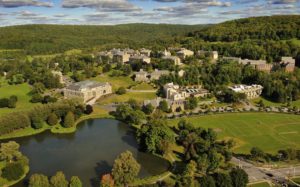
Colgate University in Hamilton, N.Y.
Hamilton lies in the near geographic center of New York State, and in 1818 Baptists in this small, rural village established the Hamilton Literary and Theological Institute in order to train and furnish preachers for the state’s growing number of Baptist congregations. The small village had an active Baptist church. Members of this congregation convinced the larger state denominational body that Hamilton’s centrality would be an asset for Baptist congregations around the state. The countryside, they also reasoned, provided a far safer educational environment than the risky growing New York City.
Hamilton Literary and Theological Institute grew quickly and, by 1846, the school changed its name to Madison University to reflect a broader educational mission beyond the training of clergy. Today, the school is known as Colgate University.
By adopting a new name to reflect a broader educational mission, some Baptists in New York State thought more substantial changes were needed for the mid-19th century institution. In the school’s 28-year history, a lot had changed. Hamilton still existed in the near geographic center of the state, but it resided many miles south of the Erie Canal that connected New York City to the growing city of Rochester on the western side of the state. Hamilton had become out of the way.
A “removalist” faction of Baptists emerged who desired to “remove” the school from Hamilton to the city of Rochester. Locating the institution in the midst of a growing city would allow ministerial candidates to receive an education with a broad and liberal, nonsectarian spirit. Students would have the opportunity to find part-time jobs to offset their expenses. Additionally, they would have greater access to educational resources not available in an isolated, rural town.
The “anti-removalists,” however, argued that a rural location provided students with “a healthy climate, a beautiful and permanent location, the remarkable cheapness of goods, fuel, rent, provision, and the consequences of very low price of board.” A city might expose students to theological heresies and vice unbecoming to a ministerial candidate. A rural town like Hamilton, however, would situate the educational institution in “the bosom of the church,” and would retain a commitment to its sectarian identity.
“Like nearly all Baptist controversies, shenanigans ensued.”
Like nearly all Baptist controversies, shenanigans ensued. The removalists opened one denominational meeting before the scheduled time in order to take a quick vote before the anti-removalists had arrived. Both sides pitted current faculty members against founding and retired faculty members.
Ultimately, the two factions found themselves before the New York State Supreme Court, which ruled that the school could not be moved from its original location because of the school’s charter. As a result, Rochester University was founded as an alternative Baptist institution within this urban context, and the soon-to-be-named Colgate University continued its operations in Hamilton.
Theology and location
The Removalist Controversy reveals the ways in which theological constructions are wedded to geographic constructions.
As urban geographers and spatial theorists argue, cities are the result of an overproduction of goods and resources. They are places of excess where goods and resources accumulate and can be sold or traded. As a result, cities are places of opportunities where one’s excess produce might be converted into money or furniture or books.
Nineteenth century Baptists who called for the removal of then Madison University sought to take advantage of the excess resources provided by an urban environment like Rochester. By taking advantage of an urban location, however, broad and liberal theological opportunities abounded as well.
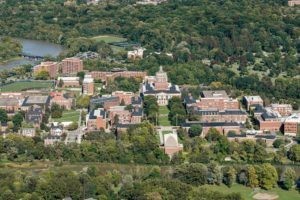
University of Rochester
Cities provide material and theological opportunities that rural environments do not always allow. Urban mission trips and immersion experiences may be celebrated by some Christians as an opportunity to deepen or innovate one’s theological perspective. It is for precisely this same reason that some Christians find urban environments particularly dangerous.
Rural environments, on the other hand, are often seen as places where individuals can return to their roots. Without the distractions of all the excesses of an urban environment, individuals have the ability to concentrate and (re)center themselves.
Donald Trump’s characterization of run-down “Democratic cities” merely adds fuel to the fire of America’s urban-rural divide. Indeed, location contributes to the shaping of our ideologies, but urban and rural environments are deeply connected too. Rural environments produce goods and raw material that make their way to cities, and cities produce and house institutions and enterprises that rural environments could not sustain.
Looking for cooperation
When Colgate University could no longer financially support its theological program in the early 20th century, it joined the theological program at Rochester University, resulting in the formation of the Colgate Rochester Theological Seminary (today Colgate-Rochester-Crozier Theological Seminary). Despite all the bickering and infighting among Baptists in the late 1840s about the most advantageous location to educate ministers, less than a century later, the two theological departments joined together in common cause — rendering those historical arguments moot.
Location is important for understanding our ideological differences, but understanding how urban and rural life are connected may go a long way in revealing opportunities for cooperation amidst our ideological differences.
It is hypocritical to demonize “Democratic cities” as locales of lawless anarchy when rural contexts often strive to champion a near anarchical obsession with individual freedom over and against governmental laws and regulations. Likewise, it is hypocritical to characterize the rural countryside as bastions of racism and white supremacy when those roots run just as deep beneath the city skyline.
Churches have both an opportunity and an obligation to think about how their location contributes to their theological identity. Recognizing the ways in which location shapes a church’s identity and theology opens opportunities to think about how they are spatially connected to those who may think differently.
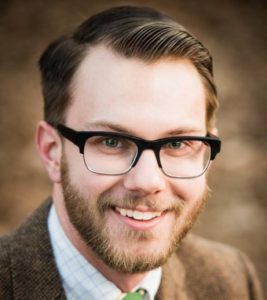 Andrew Gardner holds a Ph.D. in American religious history and is the author of Reimagining Zion: A History of the Alliance of Baptists.
Andrew Gardner holds a Ph.D. in American religious history and is the author of Reimagining Zion: A History of the Alliance of Baptists.
This article was made possible by gifts to the Mark Wingfield Fund for Interpretive Journalism.
Related articles:

